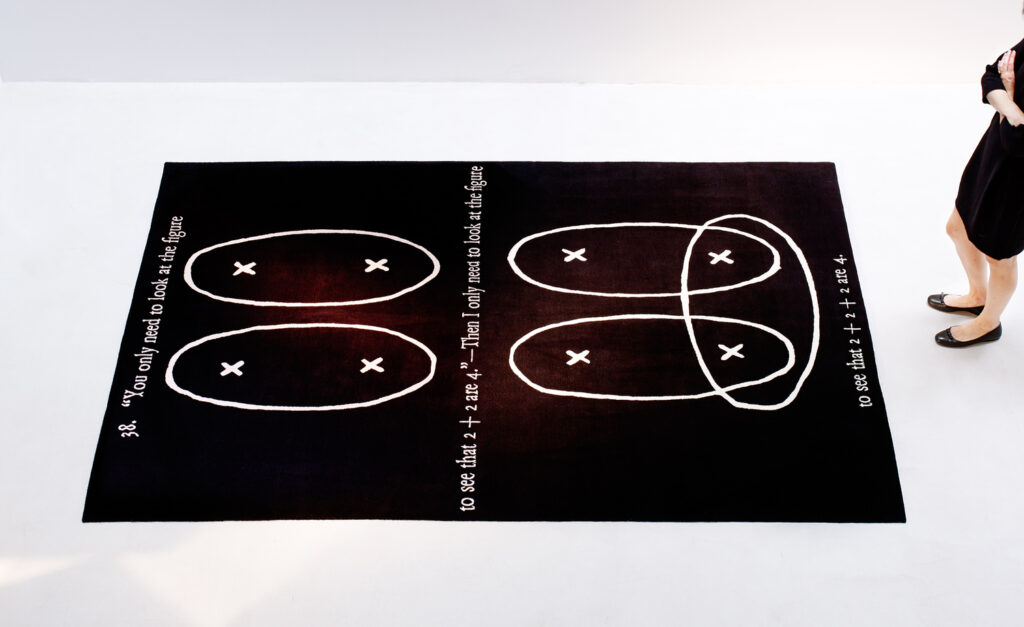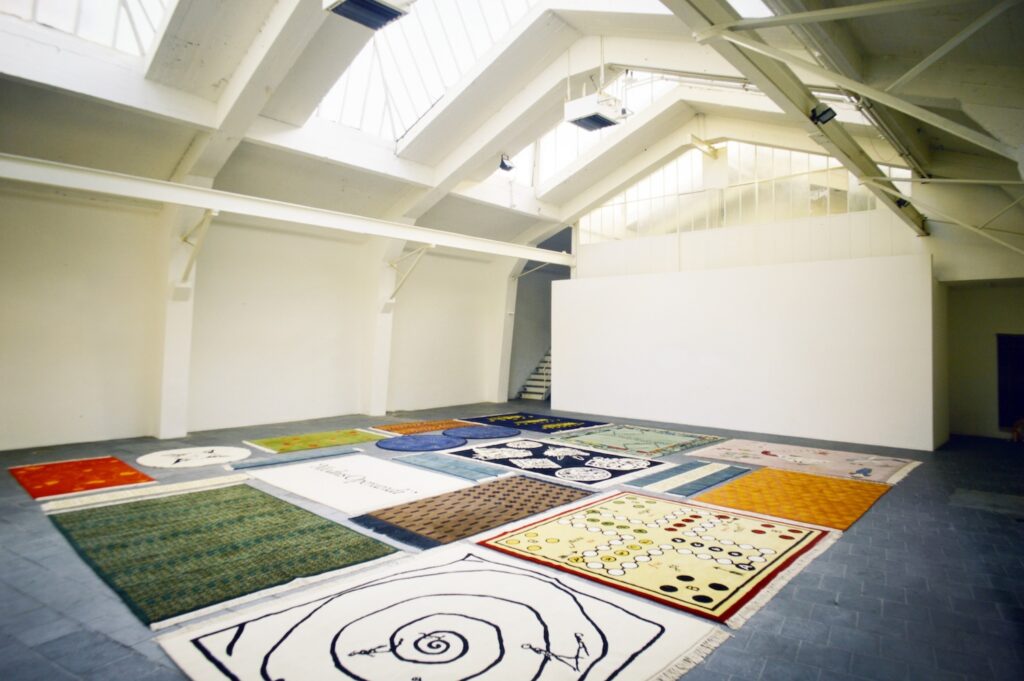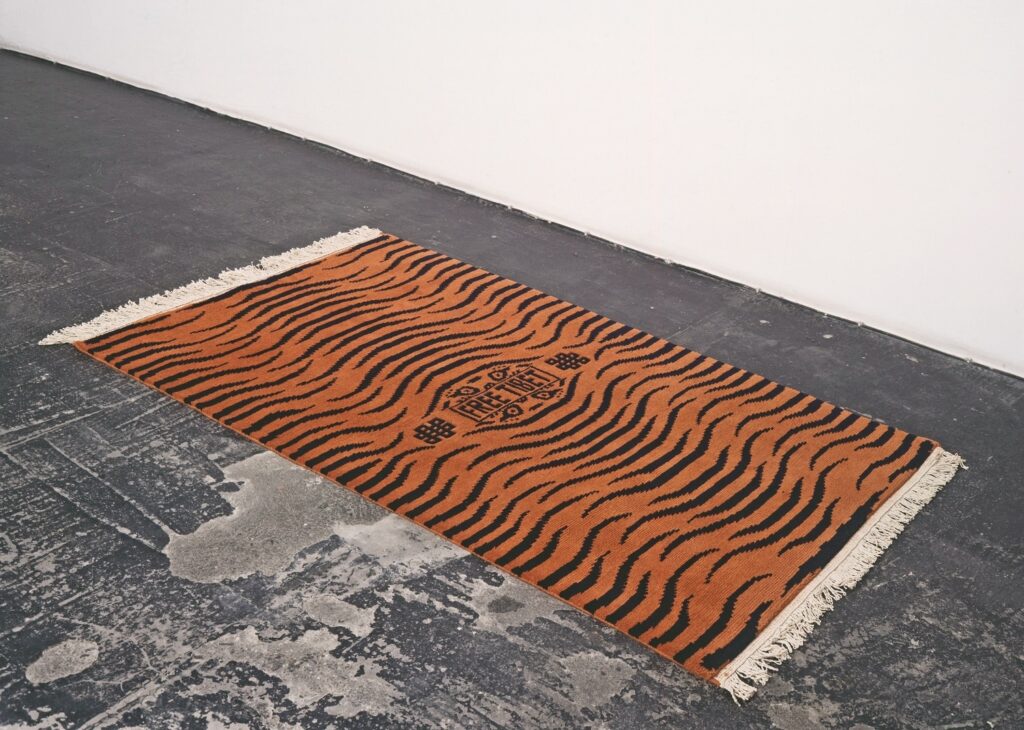
For years now, I’d assumed that it was vaporware. Research inquiries had always turned up nothing. But where the Felix Gonzalez-Torres Foundation closes a file, Joseph Kosuth…unrolls…a carpet.
Critic Deborah Solomon mention this morning of a carpet in Kosuth’s house led me to Equator Production, an artist carpet venture by Petra and Ranbir Singh with Reiner Opuku, that ran from 1985 until 2003. Petra seems to have rebooted it [Kosuth’s carpet, Remarks on the Foundation of Mathematics, has the earliest date of the new bunch: 2015.]
And in 1991 Equator Production made “Untitled” (Free Tibet), a handwoven carpet with a text saying “FREE TIBET” on it, by Felix Gonzalez-Torres, which was listed as no. XXVI in the “Registered Non-Works” appendix of the 1997 catalogue raisonné.

In 1992 Equator Production’s production filled the vast gymnasium space of Tanja Grunert’s gallery in Cologne, in a show called “The Carpet Project.” Norbert Messler’s review of the show for Artforum (May 1992) focused on the aesthetic and colonialist implications of Western artists working in an Oriental [sic] medium, and the ethics of the systems used to outsource handmade luxury objects to “Eastern lands.” Which is relevant context for Gonzalez-Torres making a Tibet-related work: “The handmade carpets are produced by Equator Productions in India, at Heart Handicrafts Limited. Heart, in turn, works closely with charity foundations of the Dalai Lama, whose political fate, as that of his country, Tibet, reappears in a tiger-striped carpet by Gonzalez-Torres, with the slogan ‘Free Tibet’ worked into the pattern.”

To which I can only say, “Tiger-striped carpet??” I realize the tiger rug is an important symbol of Tibetan Buddhism, but I’m starting to see how that slide might have ended up in the non-works pile.
[Week Later Update: Surprising no one, I have come around on the “Untitled” (Free Tibet) carpet, which is tremendous, and so must have one.]
Oh OK, it’s right here on their Squarespaced website.

Thirty years I’ve been wondering, and now I know it looks like a tiger-striped rug with tiny FREE TIBET written into the medallion. As I try to process this, I guess I’ll also ask why the dimensions are different—122 x 200 cm in the CR vs. 180 x 240 cm IRL. And how many there are—the CR said it was an edition of 24, but can you really imagine?
Previously, related: Soft-core: On Additional Material and Non-Work
